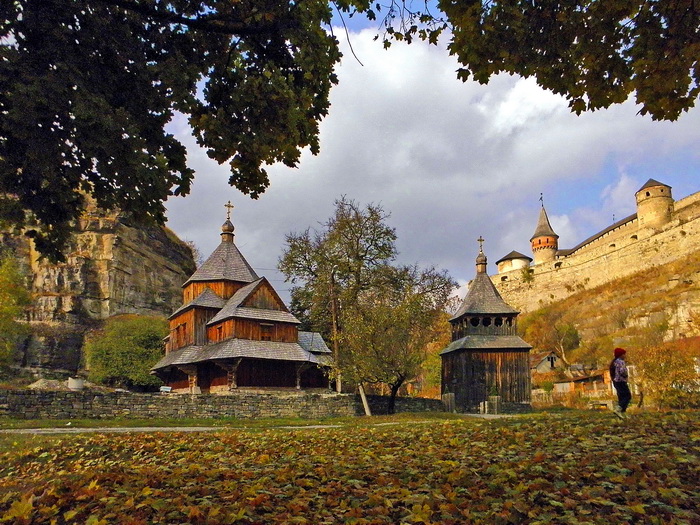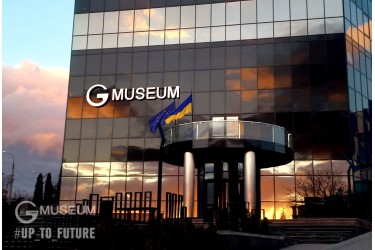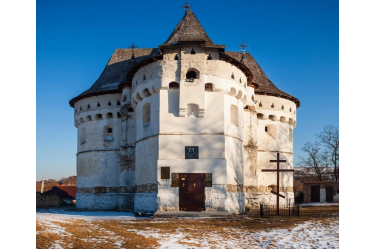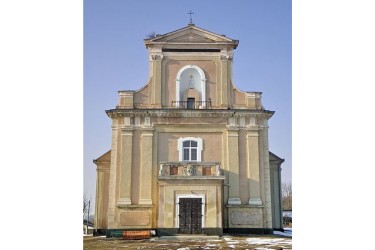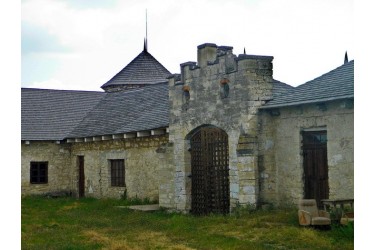List of key locations:
Old Town. Kamianets-Podilskyi
Subich rocks and Subich rock monastery
Remains of the Milky Way
Zakaznyk Chaplya
Manor of Tokarzhevsky-Karashevych
700-year-old well
Mykola Prudivus Herbal Room (tasting)
Rock Monastery
Wine tasting
Sunset on Bakota
By boat to Uslad
Khotyn Fortress
Okopy https
Zhvanetsky Castle
Kamianets-Podilskyi. Evening program
Brief introductory description:
The Dnister River is large and powerful. It is the younger brother of Dnipro, nevertheless is not less interesting and exciting. A 5-day cycling tour The Great Dnister Circle invites you to ride one of the most picturesque sections of this river – from Kamianets-Podilskyi to Novodnistrovska hydropower station and back to Chernivtsi region. You will meet on your way numerous monuments of historical, cultural, architectural and natural heritage. Short description of locations (entrance/visiting fee):
The tour starts from Kamianets-Podilskyi.
The Old Town.
Old Town is located on a peninsula in the loop of the river Smotrych. In the obligatory resolution for the residents of the city adopted by the City Council of Kamianets-Podilskyi regarding the construction part, issued in 1901 and supplemented in 1902, the note to paragraph 19 states: “ the Old Town is considered the central part within the river Smotrych. It is connected to the New Plan by the Novoplanivsky Bridge, and to the Kamianets-Podilsky Fortress, which is an integral part of the Old Town, by the Castle Bridge.”
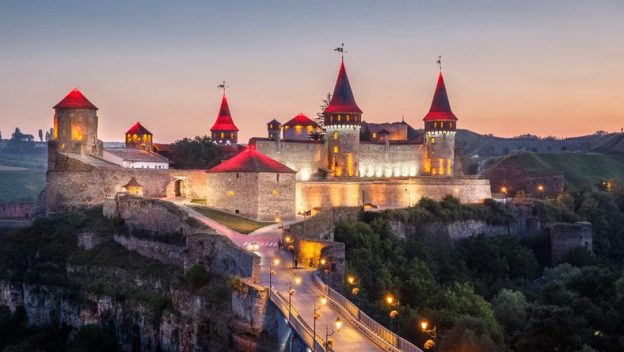
Moving to Subich
Remains of the Milky Way.
A narrow cape leads to the canyon of the Ternava River, surrounded on both sides by considerably steep slopes. Along its ridge runs an old paved road, part of which on a steep slope above the abyss is a remnant of a medieval highway, which our ancestors called the Milky Way. On the road leading to the castle stood the guards, who asked: “Whose horses?” That is why the road is called “Konycheia” meaning Ending in Ukrainian. It is famous first of all for the considerable 200-year-old stone columns sticking out along its roadside.
Zakaznyk Chaplya.
The unique embroidery of the earth is a landscape-botanical reserve of national importance Chaplya, which today has the status of a protected area of the National Nature Park Podilsky Tovtry. Even with a fleeting acquaintance, you will be enchanted by this island of nature. The locals named it Chaplya (translating as heron from Ukrainian language). It is a symbol of a great folk wisdom, as its silhouette indeed resembles a graceful bird.
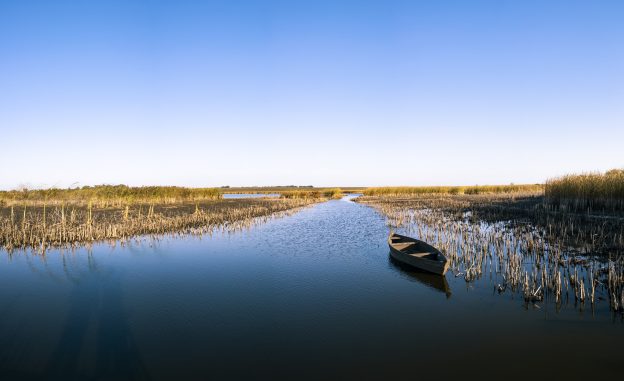
Subich rocks and Subich rock monastery.
Subich rock monastery is known since the 16th century. It is known among the locals as the younger brother of the Bakota monastery. Subich monastery is located on the tract of Mount Kemp at a height of 40 meters above the Dnister River. Only three small caves have survived to the present day. In front of the caves there is a platform about 2 m wide. An 800-meter steep descent along a narrow path leads to the caves from the chapel on the edge of the village of Subich. There are several springs on the way one of them is healing. Every year on the feast of Mary Magdalene (August 4) a festive service is held on the territory of the monastery. The Kemp Mountain offers a breathtaking panorama of the Dnister River.
Overnight in the estate, moving to the Hrushka village
Hrushka village
The Tokarzhevsky-Karashevych manor.
It is considered to be the highest point in the village. To this day, the manor park has been preserved, right next to the estate. Currently, the estate accommodates a mayor’s council and a post office.
The 700-year-old brick well in Hrushka.
This is a brick well, which is over 700 years old. According to local legends, the village began to develop from this location. There is even an approximate date – 1238. The elderly say that the Chumaks loved this place. In those early times, three pear trees grew here, and a well near them. Therefore, on their way they used to stop to rest here.
Stara Ushytsia
The Pearls of Bakota enterprise (UAH 50 / per person) of the Prudivus family specializes in growing, harvesting and selling medicinal herbs and is engaged in its own production of herbal tea for all tastes. The company’s products are exceptionally environmentally friendly, thanks to the large amount of manual labor, non-use of mineral fertilizers, and unique technologies for drying medicinal raw materials. You will be able to feel the incredible aroma of medicinal herbs, taste various types of tea, drink tea “Vigorous” for a good start to the tour, and to buy the company’s products. There is also a possibility to order a breakfast buffet.
Moving to Bakota
Bakota – the Ukrainian Atlantis. The flooded village, formerly the ancient capital of the Ponyzzia region. It was flooded because of the construction of the Dnister hydropower station in 1981. This place has a unique microclimate, rocks and forests protect the Dnister coast from northern air currents. The picturesque nature, healing springs and the energy of this place attract many streams of pilgrims and travelers.
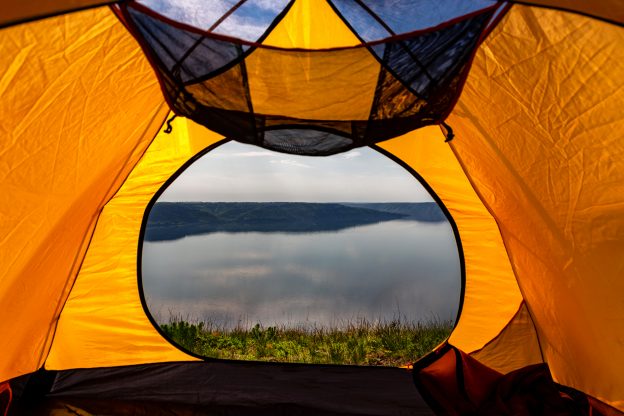
The Bakota rock-cave monastery – is located at the altitude of about 70 m on the cliff. It is located on the middle terrace of the steep slope of the White Mountain, which rises above the Dnister at the altitude 130 m. The first mention of the monastery dates back to 1362. Every year on the Feast of Macovei (August 14) on the territory of the monastery a festive service is held. On that day, you can consecrate flowers, poppies or drink healing water from Bakot springs.
Bohdan Pavli Winery.
This is a unique opportunity to visit wineries and taste exclusive wines from grapes that grow nearby. At the tasting, winery employees will offer you sheep’s cheese from a local cheese factory to accompany the wine and will explain to you how to choose it for a particular wine.
We meet the sunrise on Bakota with wine. Overnight in the estate
Transfer by boat to Uslad
On the way from the Dnister we visit:
Halych Pechersk St. Nicholas Monastery “Halytsia”.
Scholars believe that the cave-rock monastery on the high bank of the Dnister was founded by monks in the 11-12th centuries. This city has been sacred for a long time: archeological excavations conducted here in the 70s of the last century testify to the existence of pagan temples here. There is an assumption that from the beginning, the hermitage was called St. George’s. It was named “Mykolaevsky” in 1820 after a miracle that happened here on St. Nicholas Day: the stars above the monastery allegedly formed a cross.
Breakfast at Uslad, traditional Bessarabian cuisine
Departure to Khotyn (2 days long for beginners, 1 day for experienced cyclists)
• Khotyn fortress.
• Khotyn Fortress is a witness to numerous wars and battles. For centuries, it has been a center for the development of crafts and trade, culture and economy. This medieval beauty can tell a lot to those who want to listen to it… It is no coincidence that our ancestors called the rocky cape over the Dnister – Khotyn. The name of the city comes from the Ukrainian verb “to want”, because the cape was a desirable and a reliable place for ancient settlers. Due to its strong and advantageous location, Khotyn became a center for the development of crafts and trade, which contributed to the flourishing of its culture and economy. The city was an important point in European-Asian trade.
Moving to Okopy
Okopy.
After signing of the Peace of Buchach between the Polish-Lithuanian Commonwealth and the Ottoman Empire in 1672, Kamianets and Khotyn fortresses passed into the hands of the Turks, which forced the Poles to build a fortress in the trenches to block the supply of Turkish garrisons in the captured fortresses. The village of Okopy is located on a rocky peninsula between the rivers Zbruch and Dnister in the narrowest and highest place.
Zhvanetsky Castle.
The first brick fortifications of the castle appeared in the late 14th and early 15th centuries. The surviving north tower of the castle is built on the foundation of a three-walled tower, open from the middle. In the second construction phase, the height of the walls was increased. The stonewalls connected five towers, the sixth was the gate tower. The castle, except for the northern side, behind which the cliff began, was surrounded by a deep moat.
Moving to Kamianets-Podilsky. Evening program around the city, degustation of local cuisine.
End of the tour

